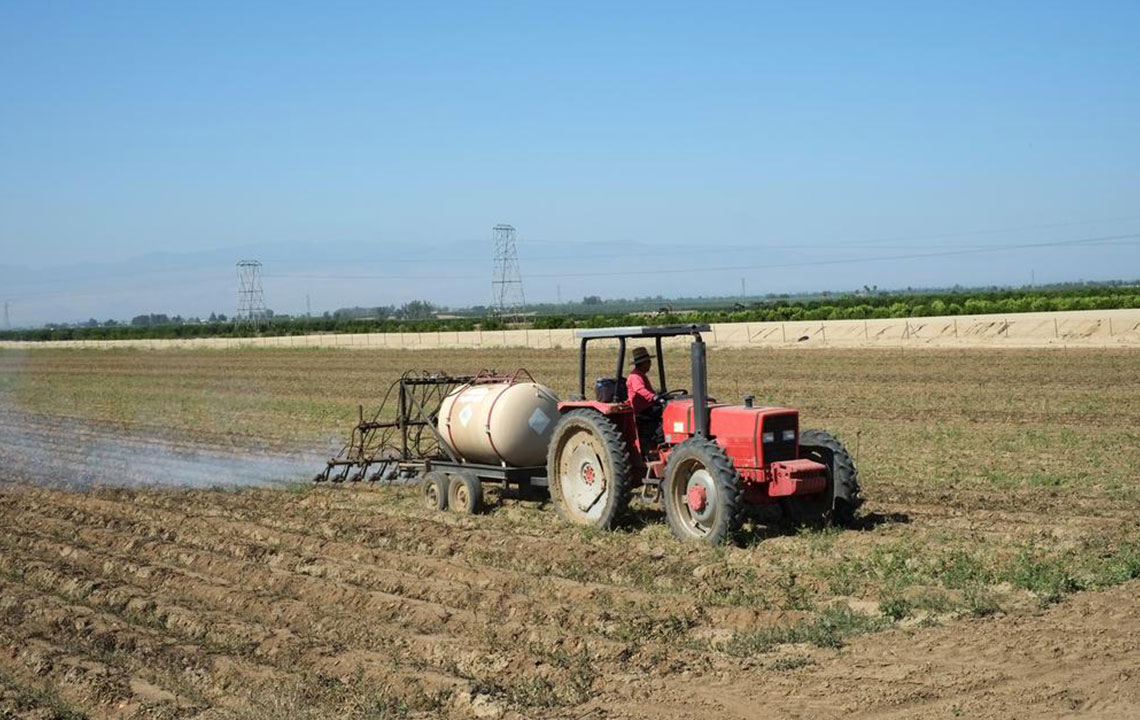Discover the Top Benefits of Implementing Modern Agricultural Management Solutions
Modern agricultural management solutions are transforming farming by optimizing resource use, improving workforce planning, enabling data-driven decisions, and ensuring traceability. This comprehensive guide discusses over 1500 words on how these innovative tools enhance efficiency, sustainability, and profitability, making them indispensable for future-ready farms. Exploring top software options, it provides insights into choosing the right system for your farm's needs.

Discover the Top Benefits of Implementing Modern Agricultural Management Solutions
In recent years, technological innovations have significantly transformed the agricultural industry, leading to more efficient, sustainable, and profitable farming practices. The adoption of advanced agricultural management software has become a crucial component for modern farmers aiming to optimize their operations, enhance productivity, and ensure environmental sustainability. These sophisticated tools integrate data analysis, automation, and real-time monitoring, empowering farmers to make smarter decisions and streamline their daily tasks. This comprehensive guide explores over 1500 words detailing the numerous benefits that come with integrating agricultural management solutions into farming practices, highlighting their critical role in creating smarter farms and resilient agricultural systems.
1. Optimized Resource Management for Sustainability and Cost Efficiency
One of the most significant advantages of agricultural management software is its ability to optimize resource utilization. Modern systems provide detailed insights into land, soil health, water, fertilizers, and pest control measures. With soil health monitoring and soil fertility data, farmers can precisely determine the required amount of fertilizers, reducing waste and avoiding over-application that could harm the environment. Moreover, pesticide application timing can be optimized based on crop growth stages and pest activity data, leading to more effective pest control and less chemical runoff. Sustainable farming practices are often reflected in this targeted approach, promoting environmental conservation while reducing input costs. As a result, farmers benefit from lower operational costs and a decreased ecological footprint, aligning with environmentally responsible farming standards.
Leveraging this technology ensures precise resource use, promoting eco-friendly practices and cost reductions.
2. Enhanced Workforce Planning and Labor Optimization
An efficient agricultural management system dramatically improves workforce management. It provides valuable insights into optimal timing for planting, fertilizing, irrigation, pest control, and harvesting activities. By accurately predicting when to execute each task, farmers can plan their labor force more effectively, reducing idle time and unnecessary labor expenses. Additionally, real-time monitoring of crop stages and conditions enables better deployment of workforce resources, ensuring personnel are assigned exactly when and where needed. This targeted labor management boosts productivity, lowers labor costs, and allows farm managers to respond quickly to changing conditions, ultimately leading to more profitable farming operations.
3. Data-Driven Decision Making with Enhanced Accuracy
Modern agricultural management tools integrate weather forecasting, satellite imagery, and predictive analytics to support proactive decision making. Having access to real-time weather data helps farmers anticipate adverse weather events, such as storms or droughts, enabling them to take preventive measures or modify planting schedules accordingly. Satellite imagery provides detailed information about crop health, pest infestations, and soil conditions across large areas, facilitating targeted interventions. Predictive models help forecast future yields based on current conditions, guiding decisions on crop varieties, planting times, and fertilization strategies. These tools minimize risks associated with weather variability and optimize crop yields, ensuring farmers can adapt swiftly to environmental changes and market demands.
4. Seamless Data Accessibility and Improved Record-Keeping
Traditionally, farmers managed farm records manually, relying on paper logs and spreadsheets, which were prone to errors and difficult to organize. Agricultural management software leverages cloud technology to securely store all farm data online, making it accessible from any device with an internet connection. This centralized approach simplifies record-keeping, accelerates data retrieval, and reduces manual errors. Farmers can effortlessly track planting and harvest dates, chemical applications, equipment maintenance, financial transactions, and yield records. Easy access to comprehensive data enhances transparency, facilitates compliance with regulatory standards, and aids in tracking farm performance over time. Additionally, digital record-keeping supports better inventory management and planning for future seasons.
5. Traceability and Food Safety Assurance
Transparency and traceability are increasingly demanded by consumers and regulators. Agricultural management solutions offer robust tracking features that document each step of the supply chain—from seed planting, fertilization, pest control, harvest, to distribution. This detailed record allows farmers and food producers to verify the provenance and quality of their products, ensuring compliance with food safety standards such as HACCP or GlobalGAP. In case of contamination or quality issues, traceability data allows for swift recalls and corrective actions, reducing risks related to food safety breaches. Furthermore, providing transparent supply chain information bolsters consumer confidence and enhances brand reputation. The ability to trace produce from farm to table is becoming a critical differentiator in today's competitive food industry.
Before integrating new agricultural software, farmers are advised to conduct thorough research on vendors. Participating in demos or tutorials can help evaluate ease of use, compatibility with existing systems, and specific features suited to farm needs, ensuring a smooth transition and maximum benefit from the technology.
Top Agricultural Management Software Solutions to Consider
1. Trace AgTech
Trace AgTech is renowned for its comprehensive suite of features, including expense control, quality assurance, traceability, and supply chain management. Its developer team’s extensive agricultural background ensures tailored support, making it a popular choice for farmers seeking an all-in-one platform to manage their operations efficiently. The system provides tools for budget tracking, crop quality monitoring, and supply chain transparency, helping farmers meet strict industry standards and improve profitability.
2. Farmbrite
Developed by agronomic experts, Farmbrite offers an intuitive interface and extensive functionalities that facilitate farm management for operations of all sizes. Its user-friendly design simplifies data entry, reporting, and analysis, making it accessible for farmers with varying technological expertise. Farmbrite enables detailed tracking of planting schedules, crop health, inventory, and financial data, streamlining overall farm management.
3. Granular
This platform emphasizes advanced geo-mapping and yield prediction tools. It integrates financial management features, including budgeting, cost analysis, and marketing planning, to provide a holistic view of farm performance. Granular’s predictive analytics support farmers in optimizing planting decisions and maximizing crop output, leading to higher profitability and more sustainable farming practices.




